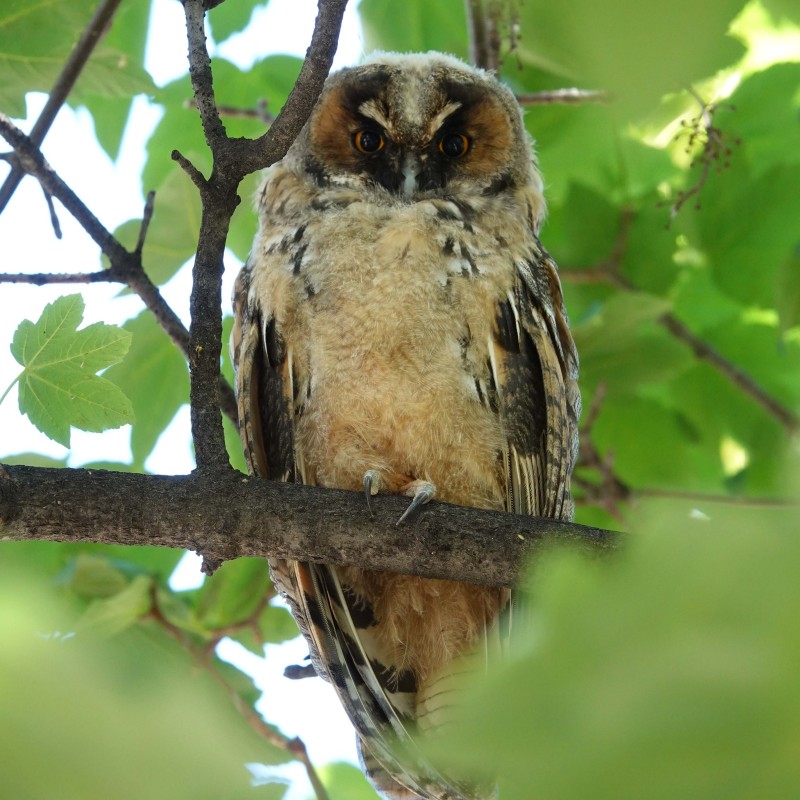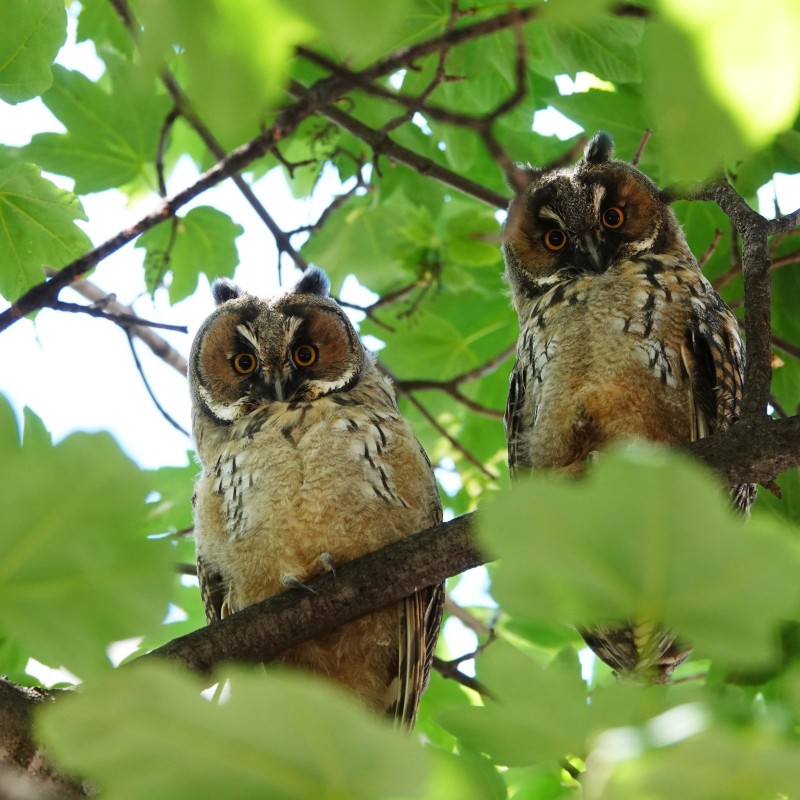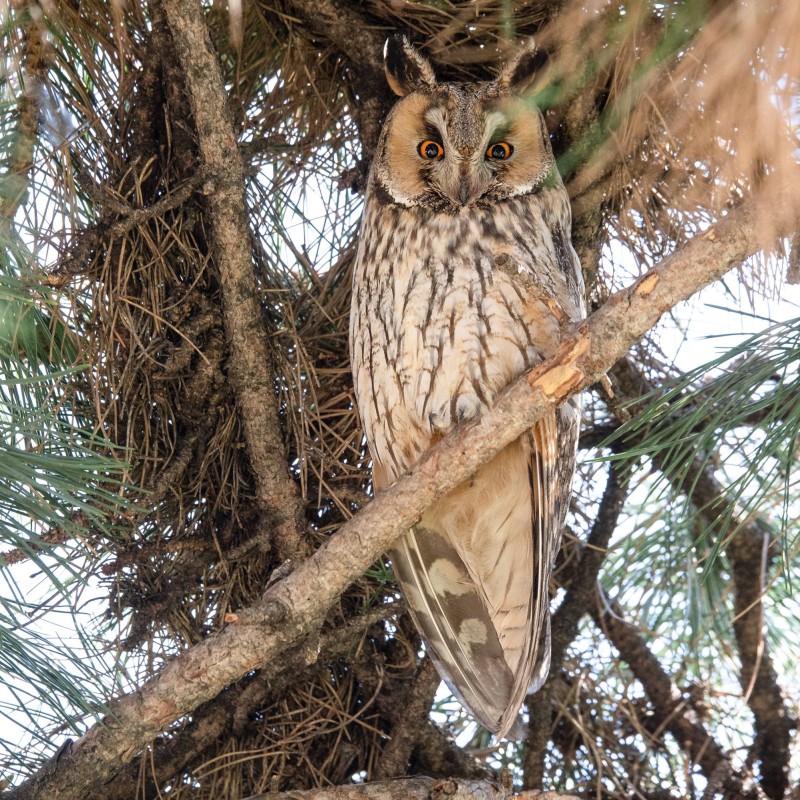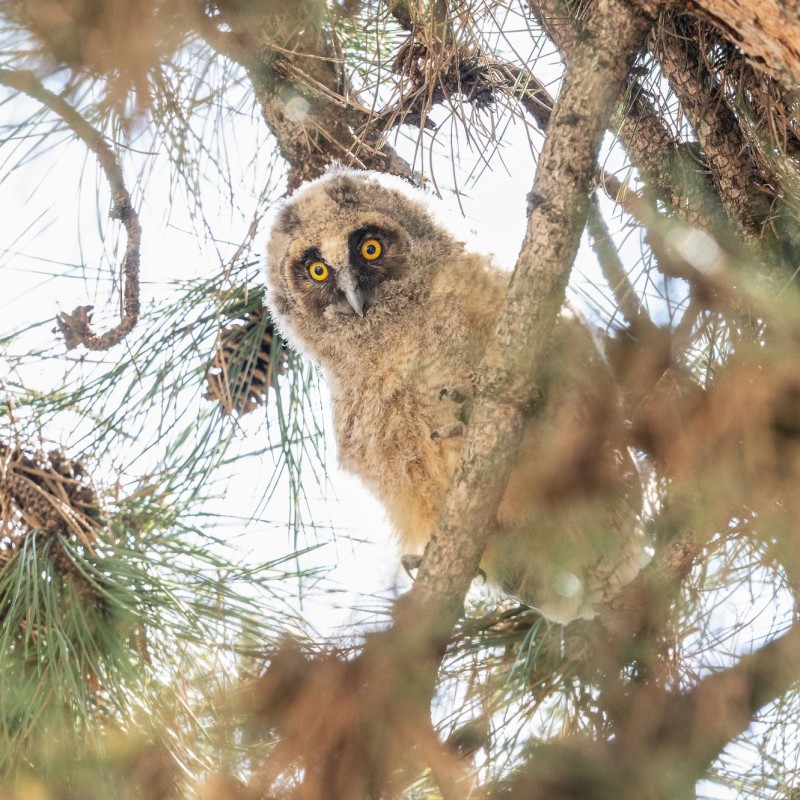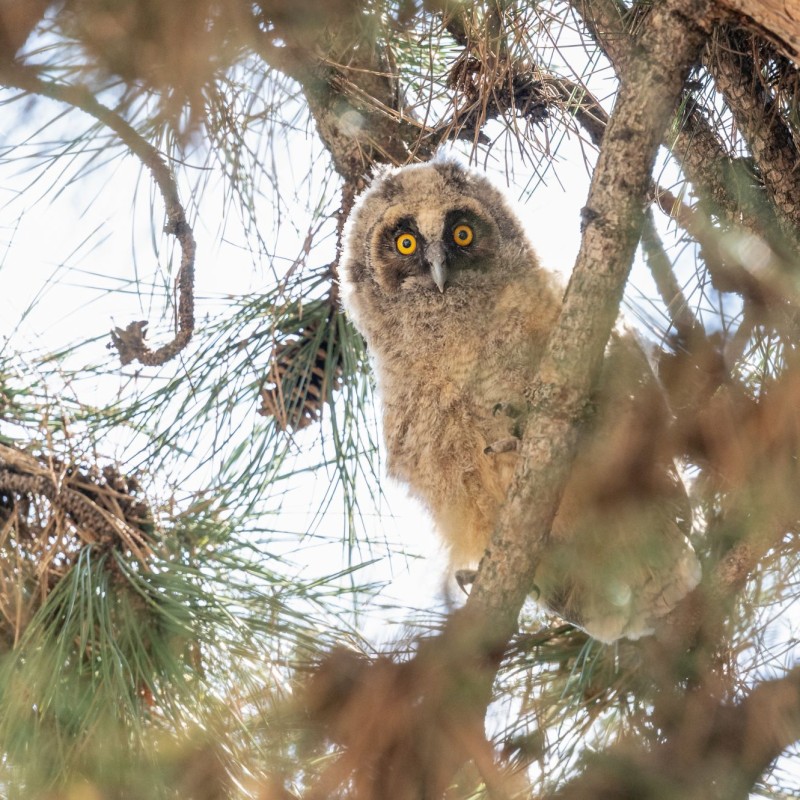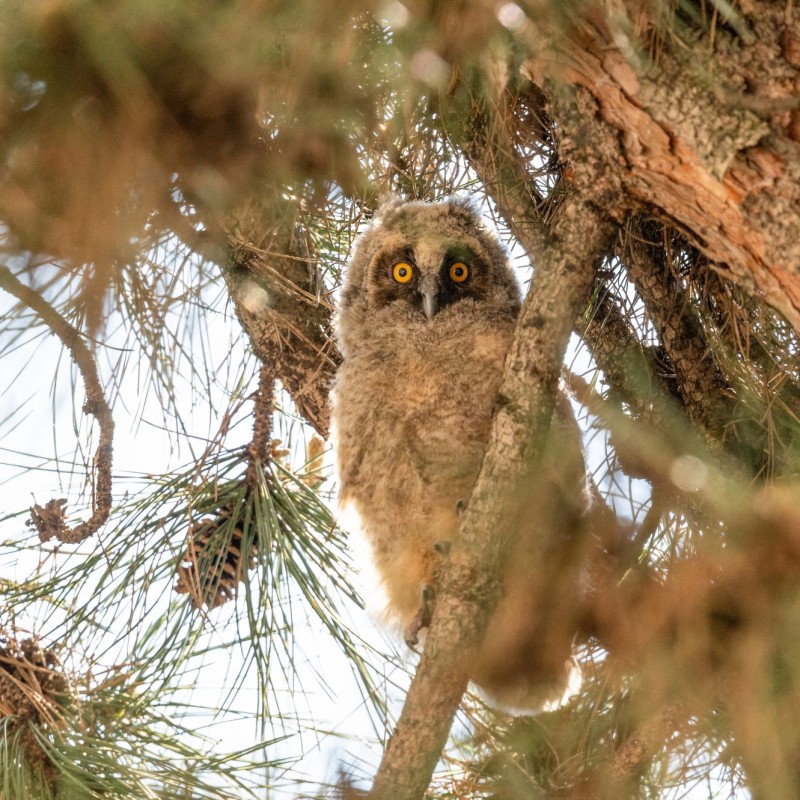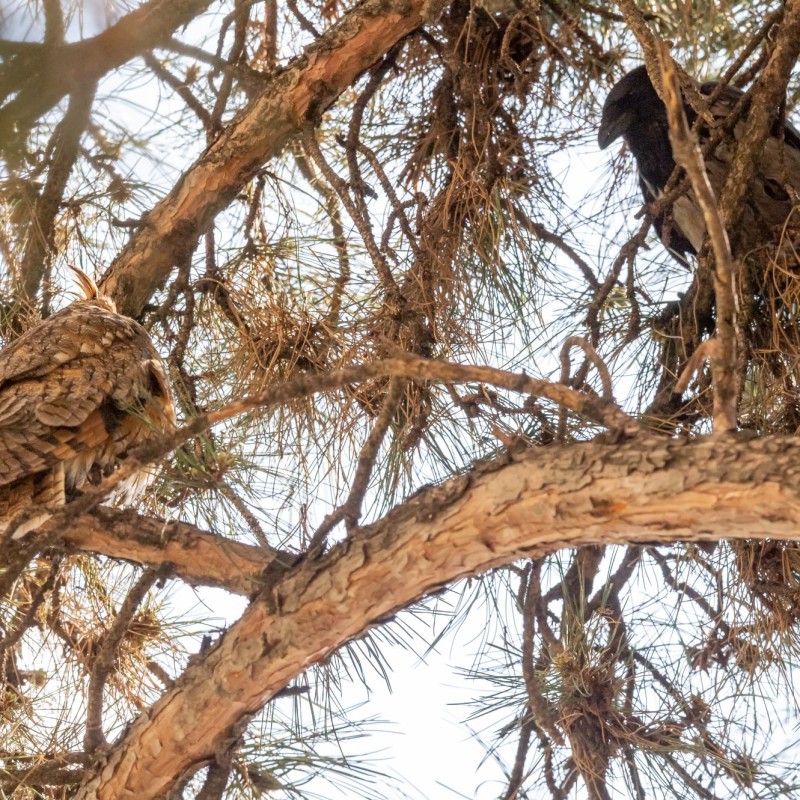Five young long-eared owls are true Vienna natives: The Natural History Museum Vienna and BirdLife Austria are delighted about rare owl progeny
09. June
2022
The long-eared owl (Asio otus)
is a common and widespread species among the ten owl species native to Austria. It hardly ever breeds in cities, however,
and the fledglings that successfully flew the nest in the centre of Vienna at the end of May are a true rarity!
If
an owl has to choose a location for a nest in a big city, it can hardly do better than the old pine trees on Maria-Theresien-Platz
in front of the Natural History Museum (NHM) Vienna. Even so, it is a rare pleasure to see a long-eared owl successfully raise
five fledglings. In late March, staff members at the NHM’s Central Research Laboratory began to realise what was going on.
“Much to everyone's surprise, an owl was looking in the window,” says Hans-Martin Berg from the NHM’s bird
collection.
Relying on the nests of others in urban and rural environments
Usually long-eared owls breed in cultivated land that has copses, meadows and fields, where this hunter of mice finds abundant prey and a quiet breeding place in old trees. “What they do need for breeding is a ready-made home, since long-eared owls do not build nests themselves. The fact that they especially like to settle down in nests of ravens, crows or magpies also indicates an important function fulfilled by crows and ravens in nature. It is also remarkable that the food supply was rich enough for a proud number of five fledglings, because owls usually produce smaller clutches,” notes Hans-Martin Berg. Initial examinations of the owls’ food remains (pellets) by a staff member of the museum's mammal collection showed that the menu included mainly forest mice and young Norway rats, but also small birds and bats. In the meantime, the young owls have flown the nest and are exploring the surroundings of the museum, “where hopefully they will not become roadkill – unfortunately a frequent cause of death for owls in particular,” Berg adds.
The big city a new owl habitat?
Norbert Teufelbauer from BirdLife Austria sees an increase in the number of long-eared owls colonising Vienna: “Earlier surveys in Vienna show that the approximately 50 breeding pairs mainly bred on the periphery of the city. For some years, however, they have also been colonising the densely built-up city centre, as shown by the association's data collection www.ornitho.at. Green areas and old trees are important for the owls.” Berg and Teufelbauer are convinced that especially in times of climate change these “green oases” fulfil an important function for people and wildlife alike and contribute significantly to our well-being and the preservation of biodiversity.
Relying on the nests of others in urban and rural environments
Usually long-eared owls breed in cultivated land that has copses, meadows and fields, where this hunter of mice finds abundant prey and a quiet breeding place in old trees. “What they do need for breeding is a ready-made home, since long-eared owls do not build nests themselves. The fact that they especially like to settle down in nests of ravens, crows or magpies also indicates an important function fulfilled by crows and ravens in nature. It is also remarkable that the food supply was rich enough for a proud number of five fledglings, because owls usually produce smaller clutches,” notes Hans-Martin Berg. Initial examinations of the owls’ food remains (pellets) by a staff member of the museum's mammal collection showed that the menu included mainly forest mice and young Norway rats, but also small birds and bats. In the meantime, the young owls have flown the nest and are exploring the surroundings of the museum, “where hopefully they will not become roadkill – unfortunately a frequent cause of death for owls in particular,” Berg adds.
The big city a new owl habitat?
Norbert Teufelbauer from BirdLife Austria sees an increase in the number of long-eared owls colonising Vienna: “Earlier surveys in Vienna show that the approximately 50 breeding pairs mainly bred on the periphery of the city. For some years, however, they have also been colonising the densely built-up city centre, as shown by the association's data collection www.ornitho.at. Green areas and old trees are important for the owls.” Berg and Teufelbauer are convinced that especially in times of climate change these “green oases” fulfil an important function for people and wildlife alike and contribute significantly to our well-being and the preservation of biodiversity.
Long-eared owl
Der Altvogel überwacht die Brut. Gut im Bild zu sehen, die namensgebenden „Federohren“
der Eule.
(c) NHM Wien, Peter Sehnal
(c) NHM Wien, Peter Sehnal
Long-eared owl
In diesem Stadium können die Jungvögel als sogenannte „Ästlinge“ bereits ausgezeichnet
klettern, aber noch nicht fliegen.
(c) NHM Wien, Peter Sehnal
(c) NHM Wien, Peter Sehnal

